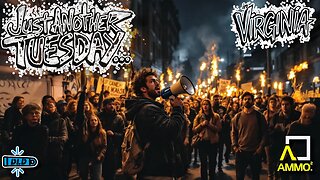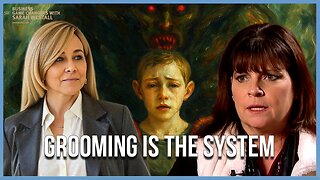Premium Only Content

Frozen Sky
The Survivors of the Arctic Crash
The Arctic is not a place meant for men. It is a white silence that stretches forever, a graveyard of wind and ice where the sun hides for months and the cold has a soul of its own. It is a place that does not forgive mistakes. Yet sometimes, when fate turns cruel, people find themselves there — uninvited, unprepared, and forced to fight not only for survival, but for the right to hope. This is the true story of a plane that fell from the frozen sky, and the few who lived long enough to see the dawn return.
It was October 13, 1972, when a small Uruguayan Air Force plane took off from Montevideo carrying forty-five people — a rugby team, their friends, and family — bound for Chile. They were young, full of life, laughing, teasing, making plans. The Andes Mountains were beneath them, a spine of white peaks rising like teeth. They had no idea they were flying into a nightmare.
The weather worsened as they neared the mountains. The pilots struggled to navigate through thick clouds, their instruments unreliable, the visibility nearly gone. Then, without warning, a mountain appeared directly ahead — a wall of rock and ice. The pilots pulled hard, engines screaming, but the right wing struck first, tearing away. The fuselage spun, broke apart, and crashed onto a glacier high in the Andes. Snow and metal exploded together, and then there was silence.
Of the forty-five aboard, thirty-three survived the initial crash. They awoke to a world of blinding white. The fuselage, half-buried in snow, became their only shelter. The air was thin, freezing, and cruel. Many were badly injured. Some had broken bones, others internal bleeding. Their only food came from a few chocolate bars and bottles of wine. They were trapped at 12,000 feet, surrounded by peaks that rose like walls. No one could hear them. No one was coming.
Days turned into weeks. The cold was relentless. They melted snow for water using pieces of metal warmed by the weak sun. The radio brought only despair — after a week, they heard rescuers had called off the search. They were presumed dead. It was then that the truth settled in: if they wanted to live, they would have to save themselves.
When the food ran out, desperation forced an unthinkable choice. The dead were frozen in the snow, preserved by the cold. The survivors, facing starvation, made the decision that would haunt them forever — they would eat the flesh of their friends to stay alive. It was an act not of cruelty, but of faith, a desperate pact made under a sky that offered no mercy. They wept, prayed, and then did what they had to do.
Blizzards swept the mountains, burying what little hope they had. Avalanches crashed over the fuselage, killing more of the group. Each morning they awoke unsure who would survive the night. Their lips cracked, their bodies wasted, and still they waited. They told stories, sang songs, and dreamed of green fields and warmth. One of them, Nando Parrado, who had been in a coma for days after the crash, woke to find his mother and sister dead beside him. He grieved in silence, then turned his grief into resolve.
After more than two months, Nando and another survivor, Roberto Canessa, made a decision that would change everything. They would climb out of the mountains and find help — or die trying. With scraps of clothing for warmth and a few pieces of human flesh for food, they began their ascent. For ten days, they walked across glaciers, climbed peaks with bare hands, and crossed valleys of ice. Their shoes fell apart. Their lips bled. The cold tore at their lungs. But they kept walking, driven by the faint hope that somewhere, beyond the mountains, there was life.
Then, on the tenth day, they saw something that didn’t belong — a small black figure moving far below, across a river. They shouted, but their voices were too weak. The man looked up, saw them, and waved. He was a Chilean shepherd. They had reached the edge of the mountains.
Help arrived two days later. Helicopters flew into the Andes and rescued the remaining fourteen survivors who had waited seventy-two days in the frozen wilderness. When they were found, they were barely alive — emaciated, frostbitten, their eyes hollow. Yet they had endured the impossible.
The world was stunned when their story broke. Many judged them for what they had done to survive, but Nando Parrado said it best: “When you are surrounded by death, you learn that the greatest gift of life is life itself.” He and the others carried that truth with them for the rest of their days.
Years later, Nando returned to the mountains. He stood where the plane had fallen and said goodbye to those who had not made it. The glacier was quiet, the wreck still buried beneath snow. He said the mountain no longer frightened him. It had taught him what it meant to be human.
Their story became a symbol — not of tragedy, but of endurance, faith, and the strength that rises only when everything else is gone. They were ordinary people who faced the most extraordinary test, and they proved that even in the coldest, most lifeless places on Earth, the will to live burns brighter than any flame.
-
 2:11:28
2:11:28
DeVory Darkins
4 hours agoLIVE NOW: 2025 Election results and Exit Polls AMA
48.5K34 -
 LIVE
LIVE
DLDAfterDark
3 hours ago $0.01 earnedJust Another Tuesday - In Virginia - The Governor's Race & Glock Talk
111 watching -
 3:21:38
3:21:38
The Charlie Kirk Show
6 hours agoJUDGMENT DAY 2025: The Election Results Stream
175K72 -
 3:51:07
3:51:07
MattMorseTV
7 hours ago $0.75 earned🔴Election Day LIVE COVERAGE.🔴
85.6K46 -
 1:16:51
1:16:51
Flyover Conservatives
23 hours agoSHOCKING DATA REVEALS: Young Voters Are Done With the Old GOP - Mark Mitchell, Rasmussen Reports | FOC Show
26.6K16 -
 1:15:28
1:15:28
Sarah Westall
6 hours agoGrooming is Protected and Encouraged by the System – Michelle Peterson and Mike Adamovich
25.4K8 -

Akademiks
4 hours agoKendrick tries to Flip the Bots on DRAKE? WHo Beats Jay z in a verzuz. Blueface finally free!
33.5K6 -
 1:38:16
1:38:16
Professor Nez
9 hours ago🚨ELECTION NIGHT 2025 LIVE! Massive Upsets Brewing in New York, New Jersey & Virginia!
28.1K9 -
 4:48:50
4:48:50
Due Dissidence
12 hours agoLIVE: ELECTION RESULTS From NYC, NJ, and VA - Trump Approval CRATERS, Kash's Private Jet CRASH OUT
47.2K20 -
 12:50
12:50
Demons Row
5 hours ago $0.04 earnedBikers of New Jersey 💀🏍️ Pagans, Thunder Guards, and Thug Riders
23.2K6